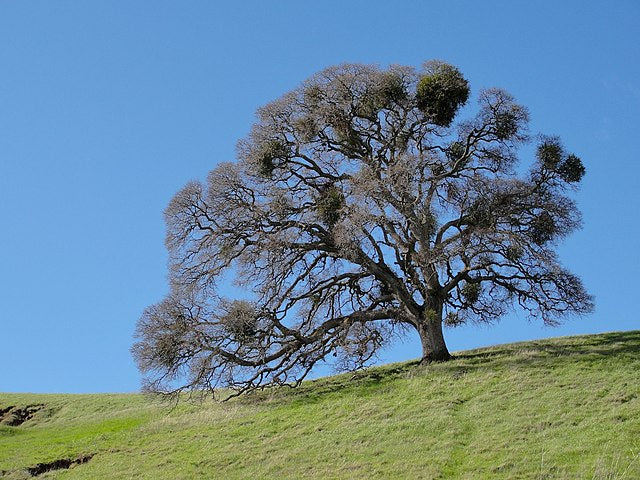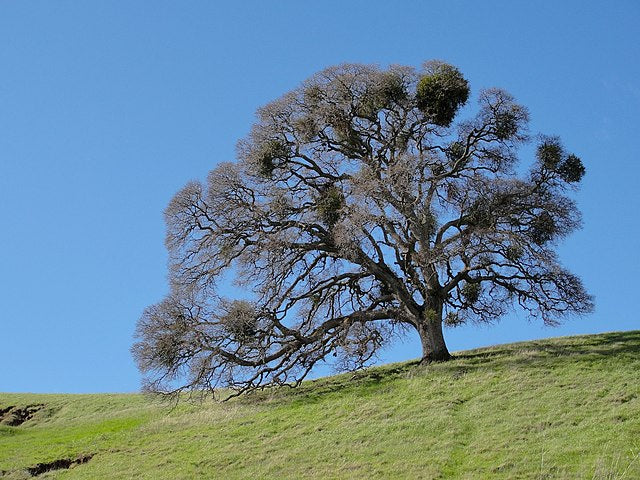Quercus lobata
Quercus lobata
Couldn't load pickup availability
Common Name:
Valley Oak
Description:
Quercus lobata, commonly known as the Valley Oak, is a grand, long-lived deciduous tree native to California. It is one of the largest North American oaks, known for its wide-spreading canopy and deeply lobed, soft-textured leaves. The foliage is a rich green in spring and summer, turning golden brown in autumn before shedding. The tree’s thick, gnarled branches and deeply ridged bark give it a striking, picturesque appearance, especially in mature specimens.
This oak thrives in full sun and well-drained soils, tolerating drought once established but preferring deep watering in dry conditions. It is highly adaptable, growing in a range of soils, including clay and sandy loam. Valley Oak is an essential habitat tree, supporting a diverse range of wildlife, including birds, squirrels, and pollinators. Its acorns are a valuable food source for many native species.
Due to its large size and strong root system, it is best suited for expansive landscapes, parks, and rural properties where it can grow undisturbed for generations.
Form:
- Tree - Large
Mature Size:
- Height: 20–30 m
- Width: 18–25 m
Aspect:
- Full Sun
Flowering:
- Flowers in Spring (Inconspicuous)
Flower Colour:
- Greenish-Yellow (Catkins)
Key Attributes:
- Strong Shade Provider
- Drought Tolerant (once established)
- Wildlife Attracting (birds, squirrels, pollinators)
- Suitable for Large Gardens and Parks
- Long-Lived (Can Live Over 300 Years)
- Deciduous
Toxicity:
- Not known to be toxic to humans or pets, but acorns contain tannins that can be mildly toxic if consumed in large quantities.
Companion Plants:
- Quercus agrifolia (Coast Live Oak)
- Arbutus unedo (Strawberry Tree)
- Ceanothus (California Lilac)
- Salvia species (Sage)
- Cercis occidentalis (Western Redbud)

Enter Your Postcode Below & Click 'Check' To See Delivery cost To Your Area
- Choosing a selection results in a full page refresh.
- Opens in a new window.

